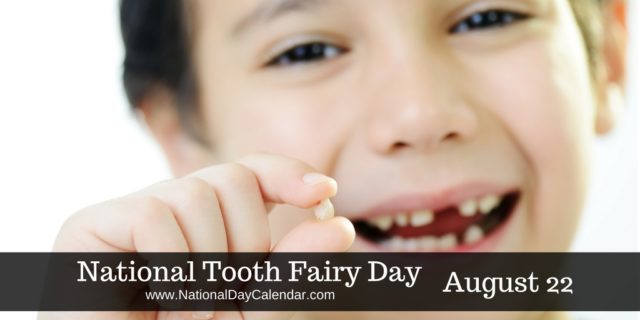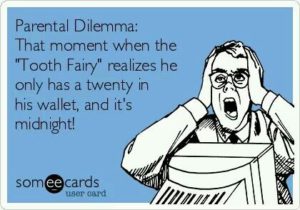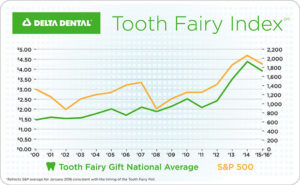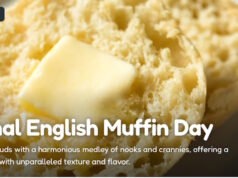
Wiggled and loose, that tooth that comes free just might get collected on National Tooth Fairy Day observed on August 22. The day is also celebrated on February 28.
This childhood favorite evolved with a group of healthcare fairies during the mid-1920s. From bath fairies to Fairy Wand Tooth Whitener, kids were encouraged through a wave of advertisements and health classes to eat their veggies, brush their teeth and get fresh air.
Esther Watkins Arnold brought the tooth fairy to life in an eight-page playlet in 1927 called The Tooth Fairy. At the same time, Sir Arthur Conan Doyle made his claim that fairies and gnomes were real by publishing pictures of two girls surrounded by “verified” fairies. Schools began performing Arnold’s play the following year, and children, primed with vivid imaginations, placed their freshly lost teeth under their pillows at night in the hopes of a visit from the tooth fairy.
- THE TOOTH FAIRY IS YOUNGER THAN YOU MIGHT EXPECT. the very earliest reference to the Tooth Fairy appears in a Chicago Daily Tribune “Household Hints” column from September 1908. Tribune reader Lillian Brown wrote in to suggest that “Many a refractory child will allow a loose tooth to be removed if he knows about the tooth fairy. If he takes his little tooth and puts it under the pillow when he goes to bed the tooth fairy will come in the night and take it away, and in its place will leave some little gift.”
- CELEBRATING A LOST TOOTH IS A LONGSTANDING UNIVERSAL TRADITION. In the 13th century, Islamic scholar Ibn Abi el-Hadid referenced the Middle Eastern tradition of throwing a baby tooth into the sky (or “to the sun”) and praying for a better tooth to replace it. Throwing teeth is a common practice: In Turkey, Mexico, and Greece, children traditionally toss their baby teeth onto the roof of their house. In India, Korea, Vietnam, and the Philippines, lower teeth are thrown upward but teeth from the upper jaw are thrown to the floor, to encourage the new adult teeth to grow straight. Traditions aren’t always sunny, though—Norwegian and Finnish children are warned of Hammaspeikko, the “tooth troll” who comes for children who don’t brush.
Last year, the Tooth Fairy paid about $290.6 million in the U.S. for lost teeth, a 13.5% increase from 2015. Cash payouts for a first lost tooth are up about 10% to $5.72. First-tooth payouts are typically higher than average. Interestingly, the Tooth Fairy must read the business pages, because the Tooth Fairy’s ‘generosity has historically been a good indicator of the economy.’
Since 1998, Delta Dental has annually conducted the Original Tooth Fairy Poll® as a fun way to gauge how generous the tiny fairy had been in the previous year. Here is the link to the poll if you would like to participate.
- According to the poll, the Tooth Fairy visits 85% of the nation’s households with children, and in most of those homes 89% of the children receive money.
- Tooth Fairy payouts are highest in the West: $5.96 ($6.89 for the first tooth); followed by the Northeast at $5.08 ($6.31); the South at $4.57 ($4.88); and the Midwest at $4.04 ($5.70).
- IS THE TOOTH FAIRY FORGETFUL? According to the Original Tooth Fairy Poll, the Tooth Fairy has forgotten to visit 35% of homes at some point.
Sources:














